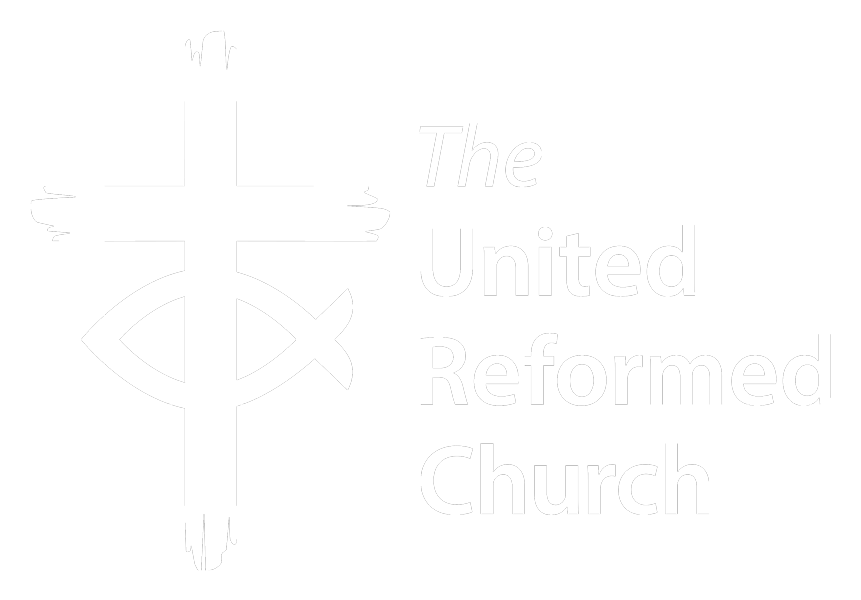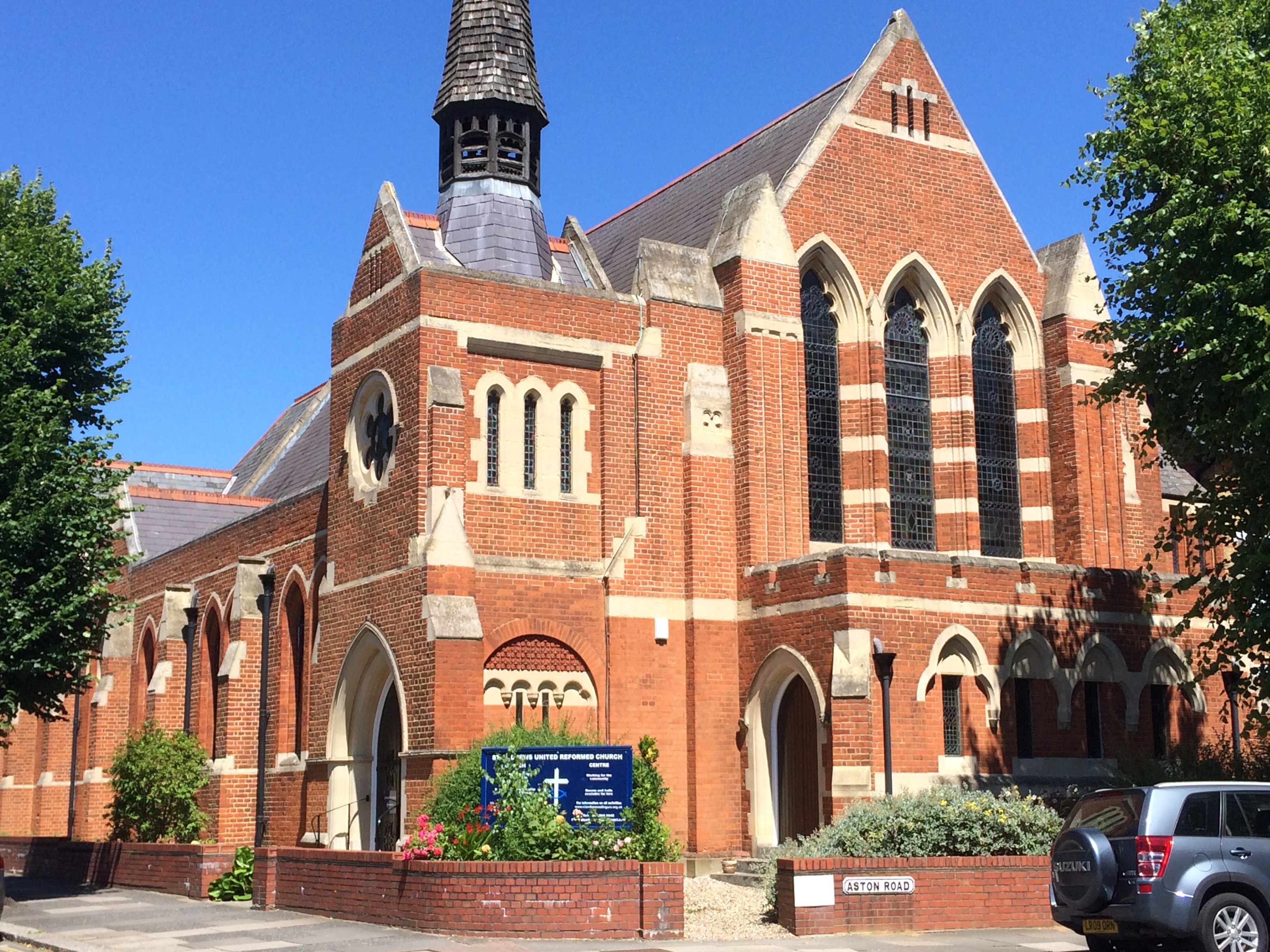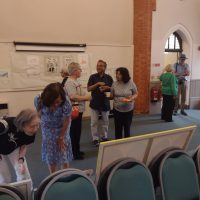Sermon given by Rev. Sue McCoan St. Andrew’s 15th January 2017
John 1:29-42
Suppose, for a moment, a friend of yours has a bit of a mid-life crisis, and comes round one day and says he has bought a classic car. He goes on to tell you t’s a 1960s Triumph Herald, two-door, four-seater, colour scarlet, 85000 miles on the clock, and he gives you the fuel consumption and the engine size and the tyre pressures and tells you everything about this car. You will be pleased that your friend is so happy; but – unless you are also a car enthusiast – you are likely to find your eyes glazing over at all this information.
Let’s now suppose a slightly different scenario. Your friend has a bit of a mid-life crisis, and buys a classic car. He comes round one day and says, ‘I’ve bought this great car! Come and have a ride in it!’
Much more fun!
If you see a beautiful sunset, or an unusual bird in the garden, and there’s someone else in the house, you don’t give a description, you say, ‘come and look at this!’
Come and see. Come and look. Come and know for yourself.
Words can be great, and I use them a lot as you know, but there are times when words don’t do the trick, when any word would limit what is going on.
We have that in our gospel reading today. John the Baptist is with his own followers, offering his baptism of repentance, when he sees Jesus, and instantly knows that this is the one he’s been waiting for. John is a preacher; he knows how to use words. Look, he says, there is the Lamb of God, who takes away the sin of the world. In one poetic image, he has identified Jesus without limiting anything he might represent.
The next day, John is there again with two of his followers, and again he sees Jesus, and again says, ‘Look! There’s the Lamb of God’. This time, the two followers are curious. They are drawn to this mysterious Lamb of God person; they want to know more. But this is so new, so unfamiliar, that they don’t know how to do it. They go towards Jesus, and he asks them, ‘what are you looking for?’ and they don’t know. ‘Er, er, where are you staying?’
I don’t imagine for one moment they are interested in his accommodation; they just want to make contact and this is the first question that springs to mind. Jesus can see what they really want, so he says, Come and see. If he’d said, ‘I’m just staying with so-and-so in the next village’, that’s the conversation over. This is a real meeting. Come and see.
One of the two that go and spend the rest of the day with Jesus – how exciting is that! – is Andrew. Andrew is thrilled. The first thing he does is to go and tell his brother Simon, ‘we’ve found the Messiah!’ He takes Simon straight to Jesus. Look! Here he is ! Come and see! Jesus sees Simon and, as John tells it, immediately gives him the name Cephas, or Peter, the rock. Which must be a bit annoying for Andrew, who doesn’t get any special mention, but that’s another story.
Come and see. You get a wonderful sense of just how new all this is. They can’t say, ‘This is Jesus who heals the sick’, or ‘Jesus who turned water into wine’ because he hasn’t done any of those things yet. We are right at the beginning, when all that you can really say is, ‘Come and see’. Come and spend time with Jesus, and learn from being with him.
We are a long way down the track now. Whole libraries have been written about Jesus, who he was, what he did and what it all meant. But still, our call to discipleship is, ‘come and see. Come and spend time with Jesus’. This is what we’re doing when we pray; when we worship together; when we do anything in the name of Jesus. This is how we grow in faith, individually and together.
Happily, there are several ways on offer in this church in which we can spend time with Jesus.
Rowan Williams points out, in his little book ‘Being Disciples’, that one way of spending time with Jesus is spending time with the people Jesus cared about: the outsiders, the disadvantaged, little children.
We have, in our church centre, a thriving toddler group. It’s packed with little children, and their parents, grandparents and childminders. And it’s a church group. Or at least it should be a church group, supported by the whole church. In fact it is currently run by Marion Green single-handed on Mondays and Anita McCleod single-handed on Wednesdays and Fridays. It would be so lovely if more of us could get involved, if we could own this together. You don’t have to be good with children – the parents and carers do that. It’s mostly a logistical exercise, getting toys out, putting them away, making coffee and washing up; and being friendly to the parents and carers. It would be great if you could come even once and help out; better still if you could come a few times, and get to know how it works, so that, should one of these two good people be ill, or want a day off, the session could keep running. Speak to Marion or Anita.
If you feel inclined to help children but can’t manage a weekday, then another really good adventure which could do with support from the church is the Child Contact Centre, on Saturday mornings. Again, you don’t have to interact with the children; the centre is there to facilitate the meeting of children with their non-resident parents. So it’s setting up, doing teas and coffees, just being there. But in doing so, making possible a vital and precious part of a child’s upbringing.
Jesus had time for children. He also spent time with outsiders, with those who, perhaps through illness or circumstances, had slipped through the net of society and were finding life a struggle.
We have for some time now been giving financial support to the Ealing Churches Winter Night Shelter. We’ve given them our Christmas collections; but I’ve always understood we couldn’t host the shelter here because the centre is so busy every evening. But then I had an email, just before Christmas, asking if we could host it on a Saturday night – and Saturday is the one night we don’t normally have bookings. And this came as we were thinking of Mary and Joseph, having no room at the inn… And the elders, and Maureen, and the Church Centre Management Committee, and I, think we could do this. Just for three Saturday nights. I do hope you will give this your support and help make people feel welcome. And again, there are practical ways to help, some of which you can do in advance if you can’t be there in person.
Spending time with, and for, the people Jesus cared about, then, is one way of spending time with Jesus. The other way, perhaps the more obvious way, is through prayer and Bible study.
The Discussion group that ran just before Advent had up to 12 people, and was a lovely mix of Bible study, discussion, and sharing friendship together – thank you to Anne and Grace for fantastic biscuits and even mince pies. I’m delighted to say we’ll be running another session for Lent, starting on 6th March, again on Mondays at 1.30 so my apologies to people who are working or somewhere else at that time. But come if you can. I’ll say more about this nearer the time.
So there are many ways to serve God, many ways to spend time with Jesus and with the people Jesus cared about, many ways in which we can develop our own discipleship.
And there’s an added benefit too.
Lots of us find it difficult to talk about our faith. Sometimes we’re just shy; sometimes the words we use in church, like ‘Lamb of God’, which mean something to us or to 1st Century Jewish people, don’t seem to have any particular meaning to people around us. The doctrines that the church has hammered out over the centuries are helpful if you want to study in depth but don’t always translate into everyday life.
But it’s easy to say, ‘Come and see’. And the more we grow in our own discipleship, the more we spend time with Jesus and allow ourselves to be shaped by him, the more easy it will be to say with confidence, ‘come and see, come and meet Jesus here’.
So three ways in which we can express the loving presence of God. Come and see. Come and see where you can join in; come and see what we can do together. And then others can come and see Christ in us.
Sue





